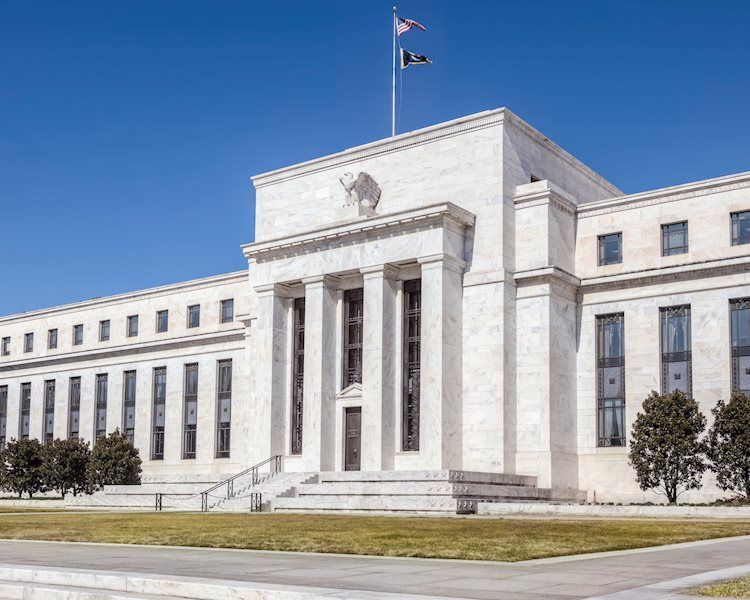The Federal Reserve recently released its revised Summary of Economic Projections (SEP), and a particular aspect of it caught the eye of the public: the so-called dot plot. The dot plot is a visual representation of the expectations of members of the Federal Open Market Committee (FOMC), the group that determines monetary policy in the United States, regarding where they believe the federal funds rate will be in the coming years.
According to the dot plot, the median view of the policy rate at the end of 2023 stood at 5.1%, unchanged from the projection made in December 2020. This means that, on average, the FOMC members expect to increase interest rates by 50 basis points (bps) in both 2022 and 2023, from the current range of 0 to 0.25%, assuming economic conditions evolve as anticipated. It is worth noting that this is not a commitment, but rather an estimate based on the information available at the time of the projections. The actual path of interest rates could vary depending on how the economy and inflation perform.
However, beyond this headline number, the SEP contains additional information that sheds light on the FOMC’s thinking. One of the key takeaways is that the median view of the policy rate at the end of 2024 rose from 4.1% to 4.3%, while the median view for the end of 2025 remained unchanged at 3.1%. Moreover, the median view of the long-term or equilibrium rate, which is the rate at which the economy can grow sustainably without generating inflationary pressures, also stayed steady, at 2.5%.
What do these projections imply for monetary policy? One way to interpret them is to consider what they suggest about the FOMC’s view of the economy. For instance, the fact that the FOMC sees rates rising faster than previously anticipated in the medium term could mean that the members expect the economy to grow more strongly, with employment and inflation also picking up. Conversely, the fact that the FOMC did not adjust its long-term rate outlook could signal that the members see the economy’s potential growth rate as remaining subdued, perhaps due to structural factors such as demographic trends or weaker productivity growth.
Another way to analyze the dot plot is to compare it with the FOMC’s other projections, which cover a range of economic indicators. For example, the FOMC now expects GDP growth to be 6.5% in 2021, down from the 4.2% projected in December 2020. This revision reflects the slower-than-expected vaccine distribution and the ongoing pandemic-related restrictions. The FOMC also projects that the unemployment rate will decline to 4.5% by the end of 2021, a more optimistic outlook than the 5.0% estimate made in December 2020. However, the FOMC sees inflation running slightly hotter than it previously anticipated, with the personal consumption expenditures (PCE) price index rising 2.4% this year, up from the 1.8% projected in December 2020.
What explains this mix of better labor market prospects and higher inflation? One possibility is that the FOMC believes that the economic recovery will generate more demand for labor, putting upward pressure on wages and prices. This scenario assumes that the supply side of the economy, in terms of labor force participation and productivity, will also improve, thus avoiding a runaway inflationary spiral. Another possibility is that the FOMC’s tolerance for inflation has risen, reflecting its new policy framework that seeks to achieve average inflation of 2% over time, rather than a strict 2% target. Under this framework, the FOMC would be willing to let inflation run above 2% for a period to make up for past shortfalls.
What are the implications of these projections for investors and the broader public? One immediate effect was a rise in long-term Treasury yields, as investors priced in the possibility of higher interest rates in the future. The yield on the benchmark 10-year Treasury note briefly touched 1.7% after the release of the SEP, up from around 1.5% before the announcement. This reaction reflects the fact that higher interest rates can make bonds and other fixed-income assets less attractive compared to stocks and other investments that can benefit from economic growth. It could also signal a belief that the Fed may need to tighten monetary policy more aggressively if inflation turns out to be more persistent than expected.
However, it is worth noting that the Fed has repeatedly emphasized that its decisions will be data-driven and that it will adjust policy as necessary to achieve its goals of maximum employment and average inflation of 2%. This flexibility means that the dot plot should be seen as a conditional forecast, subject to change depending on how the economy evolves. Moreover, the FOMC has stressed that it will provide ample notice before it begins to raise interest rates, which means that markets will have time to adjust to any new information.
In conclusion, the dot plot provides a useful snapshot of the FOMC’s thinking about interest rate policy, but it should be viewed in the context of the broader economic outlook and the Fed’s policy framework. The projection of a 5.1% median policy rate at the end of 2023 is an indication that the FOMC expects to continue withdrawing policy accommodation gradually as the economy recovers from the pandemic. However, the pace and extent of the normalization process will depend on the evolution of economic and financial conditions, as well as the Fed’s assessment of the costs and benefits of different policy options. Therefore, investors and the public should remain vigilant and responsive to new information as it becomes available.


